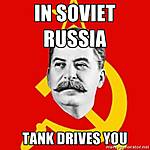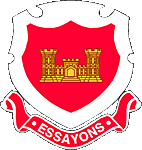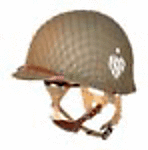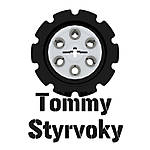@Keith: As always, I appreciate you checking in and your comments. I'm looking forward to the meeting and seeing how you're coming along with your snowy Scorpion.
@John: Thanks for the props, too. I don't always find the easiest way to do these things, and sometimes there just is no easy way.
In regards to adding the ribs the way I did, I couldn't figure out any other way to add them that wasn't insanely time consuming or that could have gotten close and neat fitting between the ribs and the body of the gearbox. In this case, I think the easiest way also produced the best results.
Quoted Text
... I need to sign you up for a scratch building seminar for next year...
JC
LOL! You must be getting desperate! If you're serious, though, let me know off-line, and I'll see what I can do.
@ Jeff: You snuck a comment in on me as I was adding this post... you crafty devil, you...
Hey, you're no slouch yourself when it comes to this stuff. I'm still waiting for you to post up some of your Japanese APC work. You've got some pretty impressive scratch-building there, yourself!
Looking forward to seeing you Wednesday. Thanks for checking in.
So, on to the Churchill...
Since the last up-date, I've built the rear gearbox mounts. These are pretty straight forward work. The design is a basic inverted, right-angle "L" with mounting pads on either end and a gusset inside the angle.
With the gearbox dry fitted in the compartment (see the last post), I measured up the distance from the rear hull wall to the gearbox mounting pads and the distance from the pads straight down to the bottom of the compartment. After checking through my stock of styrene strips, I selected .015 x .060 styrene strip as a fairly good "proportional" match for the stock used to make the prototype mounts.
(That is, the styrene strip looked about the same size as the stock on the prototype when I held the strip in the model and compared that to photos of the real thing.)
This first photo shows the basic mount shapes glued up. Note that the bottom pad is at 60 degrees to the vertical leg because the bottom of the mounts attach to the angled lower hull and not the horizontal compartment floor.
You can see how I used two drawing squares to line up the parts as the glue was setting.

Inside of each mount is gusset. In this photo you can see how I started to layout the stock for this. The sides of the gusset are the same length as the inside of the top leg of the mount. So, easy-peasy... A square cut diagonally into two parts will make two identical gussets.
To layout the square, I used a metal straight edge and held one edge of the sheet styrene tight against it. I was then able to use the metal straight edge as a guide to hold my squares, well..., square.
Four right angles later, and you could say I was all "squared away"



The square was cut out and then divided on a diagonal for the two matching gussets.

These were glued into the basic mount shapes and the mounts were set aside overnight to dry.
This is an important point - With scratch built parts that are aggregations of many small styrene bits, building in stages and allowing the glue-ups to dry completely allows for neat and clean final shaping. A degree of patience is required for this.
These gearbox mounts will be sanded flat on their sides to square up each side. I will then sand small radiuses on the corners of the mounting pads and very slightly relieve the edges. Finally, I will sand the attachment surfaces of the mounting pads square and flat for a good fit in the model. All of this final shaping and finishing requires that the mounts be hard dry so that they can withstand the handling and the glue joints will sand cleanly.

Once the glue was dry, the mounts could be sanded into their final shapes with the joints between the parts cleaned up and the rough edges smoothed out.
I then installed them into the tank using the gearbox as the alignment "template." That is, the mounts were installed to match the gearbox and not the other way round.
While waiting on the mounts to dry, I commenced work on the what is probably one of the most complicated details - the notorious "Sirocco" cooling fan.
The cooling fan in the Churchill is basically two truncated cones, one inside the other, with the fan blades between them and holding the cones together. It took me quite a while to work out the geometry and dimensions. A lack of good photos, that is, photos taken directly from the sides or top and from the front and rear made the job of figuring the features fairly difficult. Each of the two cones is different in overall diameter as well as depth.
Eventually, I went to the cutaway maintenance drawings in Montgomery's book, scaled them using measurements from the kit, converted to prototype dimensions which were then divided by the same measurements taken from the book drawings.
(BTW: The upper drawing scaled out to 1/49 and the lower to 1/46.)
I won't list all the dimensions here except to say that I did use 60 degrees as the angular measurement for the cone shapes. Anyone specifically interested in the math may feel free to PM me or post up questions in this build blog. No secrets, just that the results are even more long-winded than my usual!

With some sketches and dimensions, I was ready to form the main fan parts. In order to make these cone shapes, I decided to vacuum form them. This is a good technique for complex shapes, but it does require a lot of work.
I had to make two forms since each cone, the inner and outer, was different. I turned these forms from brass stock and the form with the deep shoulder and deeper cone required some air holes drilled radially so that the vacuum could suck the sheet into the angle.
Here's a picture of the two forms removed from the vacuum formed sheet. The deeper, inner cone has been cut out of its form and the shallow, outer cone is still wrapped around its form. On the deeper form, you can see the radial air holes where the shoulder and angle meet. These holes go to a larger, center hole.

Here the inner cone has been cleaned up and test fitted around the clutch.

And a close up of the inner fan cone and clutch. You can see that I've added some details to the clutch since the earlier post. The clutch and the shoulder portion of this cone will actually fit through the bulkhead between the gearbox and engine compartments.

Here the second, outer, but shallower cone has been cleaned up and removed from its form, which is now clearly visible. Because this form was so shallow, it did not require the air vacuum holes needed for the deeper form.

Finally, here's a test fit shot of the fan cones. Also visible are the two rear gearbox mounts. The critical check here was to ensure that the larger diameter, outer fan cone did not touch the floor of the gearbox compartment.

When completed, the fan will not protrude so far rearward into the compartment. The cylindrical portion of the inner cone and the clutch will be positioned through the bulkhead and the outer fan cone will touch the wall.
(In reality, the actual outer part of the fan also goes through the wall, but since I'm only showing the gearbox compartment up to the bulkhead, I don't need to actually put the outer part of the fan through the wall.)
The next couple of build sessions will concentrate on assembling the fan with its blades holding the two cones together.
Happy modeling!




















































































